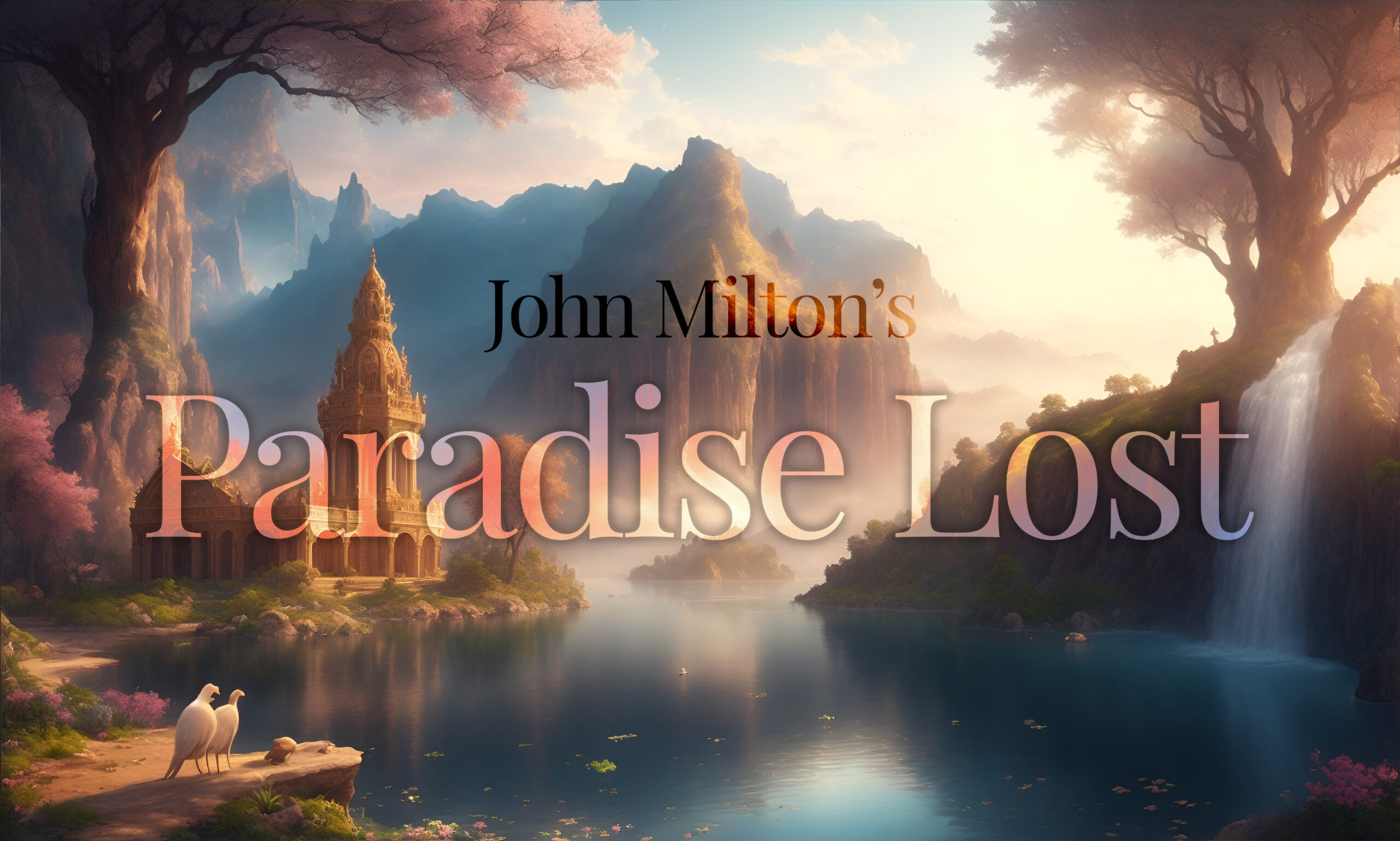
Milton’s Diction and Style in Paradise Lost
John Milton‘s epic poem Paradise Lost, published in 1667, is not only renowned for its profound themes and narrative structure, but also for the distinctive diction and style employed by the poet. In this analysis, we will explore Milton’s use of diction, syntax, and other stylistic elements in Paradise Lost, examining their impact on the poem’s overall tone, imagery, and thematic resonance.
Milton’s choice of diction in Paradise Lost is elevated and grand, reflecting the epic nature of the poem. He employs a rich vocabulary, drawing from both classical and biblical sources, to create a sense of grandeur and majesty. The language of the poem is formal and archaic, with words and phrases that evoke a sense of the timeless and the monumental. Through his diction, Milton establishes an aura of authority and significance, elevating the subject matter and reinforcing the epic tone of the poem.
One striking aspect of Milton’s diction in Paradise Lost is his use of Latinate and compound words. These words add a sense of sophistication and erudition to the poem, reflecting Milton’s vast knowledge of classical languages and literature. For example, in Book I, Milton describes Satan as “unrespited, unpitied, unreprieved” (line 62), employing compound words to emphasize the depth of Satan’s punishment and the absence of mercy. This use of compound words not only enhances the rhythmic flow of the verse but also adds a sense of weight and intensity to the description.
Moreover, Milton’s diction in Paradise Lost is characterized by its precision and clarity. He chooses words carefully, aiming for exactness and evocativeness. This precision allows him to convey complex ideas and emotions with clarity and conciseness. For instance, in Book II, Milton describes Satan’s transformation after his fall:
“Me miserable! Which way shall I fly
Infinite wrath and infinite despair?
Which way I fly is Hell; myself am Hell;
And, in the lowest deep, a lower deep
Still threat’ning to devour me opens wide,
To which the Hell I suffer seems a Heaven.”
(lines 75-80)
In this passage, the use of words such as “miserable,” “infinite wrath,” “infinite despair,” and “devour” captures the depth of Satan’s anguish and the magnitude of his predicament. The precise choice of words enables Milton to convey complex emotions and concepts in a succinct and powerful manner.
Milton’s syntax in Paradise Lost is characterized by its syntactic complexity and syntactical inversions. He often employs long, convoluted sentences that require careful reading and contemplation. This complex syntax serves multiple purposes in the poem. Firstly, it allows Milton to explore profound philosophical and theological ideas, as the intricate sentence structures mirror the intricacy of the concepts being expressed. Secondly, it creates a sense of rhythm and musicality in the verse, contributing to the overall poetic effect. Lastly, the syntactical inversions, such as placing the object before the subject or delaying the main clause, add emphasis and draw attention to certain ideas or images.
For example, in Book IV, Milton describes the celestial light that emanates from the Garden of Eden:
“Ambrosial night, Night only mid her gloomy van,
In silence, waste, and solitary reigns,
What profiteth that while scarce a star appears,
And scarce a moonbeam wanders through the shade,
I walk invisible, unheard, unseen?”
(lines 606-610)
In this passage, the inversion of the subject and object in the first line, the delay of the main clause in the second line, and the repetition of the word “scarce” all contribute to the musicality and emphasis of the verse. The syntax enhances the sense of mystery and solitude in the description, immersing the reader in the atmospheric world of the poem.
Another notable aspect of Milton’s style in Paradise Lost is his use of imagery. Milton employs vivid and imaginative imagery throughout the poem, drawing from a wide range of sensory experiences to create a multisensory world for the reader. He utilizes visual, auditory, olfactory, and tactile imagery to bring the narrative and characters to life. The imagery in Paradise Lost serves both descriptive and symbolic functions, enriching the themes and motifs of the poem.
For instance, in Book I, Milton employs vivid visual imagery to depict Satan’s physical transformation after his fall:
“Nine times the space that measures day and night
To mortal men, he, with his horrid crew,
Lay vanquished, rolling in the fiery gulf,
Confounded, though immortal.”
(lines 45-48)
In this passage, the image of Satan “rolling in the fiery gulf” conveys the chaotic and disoriented state of the fallen angels. The vivid visual imagery enhances the reader’s understanding of the magnitude of their defeat and the abyss of Hell. It also symbolizes the disarray and confusion that follow rebellion and the loss of divine grace.
Milton’s use of auditory imagery is also notable in Paradise Lost. He often employs sound devices, such as alliteration and onomatopoeia, to create a musical quality in the verse. For example, in Book II, Milton describes the clash of weapons and the tumultuous sounds of battle:
“The noise of endless wars resounds around,
The sounding anvil and the jarring shield.”
(lines 482-483)
The alliteration in “noise of endless wars,” “sounding anvil,” and “jarring shield” adds a rhythmic quality to the verse, mimicking the cacophony of battle. The auditory imagery immerses the reader in the chaotic atmosphere of the battlefield, intensifying the sensory experience and evoking a visceral response.
The symbolism in Paradise Lost further contributes to Milton’s unique style. Milton employs rich and intricate symbolism, drawing from biblical, classical, and cultural references. He weaves these symbols into the narrative, adding depth and layers of meaning to the poem. The symbolism in Paradise Lost serves both theological and allegorical purposes, exploring profound themes and embodying abstract concepts.
One prominent symbol in Paradise Lost is the Tree of Knowledge, located in the Garden of Eden. The tree represents the duality of knowledge and its consequences. It symbolizes both the potential for enlightenment and the temptation to disobey divine authority. The tree becomes a central motif in the poem, embodying the themes of sin, rebellion, and the fall of humanity.
Additionally, the character of Satan is laden with symbolic significance. He embodies the archetype of the fallen angel, representing pride, ambition, and the corruption of the divine. Satan’s physical appearance, his rhetoric, and his actions are all imbued with symbolic meaning, reflecting Milton’s exploration of the nature of evil and the consequences of rebellion.
In conclusion, John Milton’s diction and style in Paradise Lost are characterized by their elevated language, precise choice of words, complex syntax, vivid imagery, and rich symbolism. Milton’s use of diction and style enhances the epic tone of the poem, immersing the reader in a grand and monumental narrative. The carefully crafted language and stylistic elements serve to convey complex ideas and emotions, create vivid sensory experiences, and explore profound theological and philosophical concepts. Milton’s unique style in Paradise Lost has contributed to the enduring legacy of this epic poem and continues to captivate readers with its literary richness and depth.
*****
Read More: Questions and Answers from Paradise Lost by John Milton


